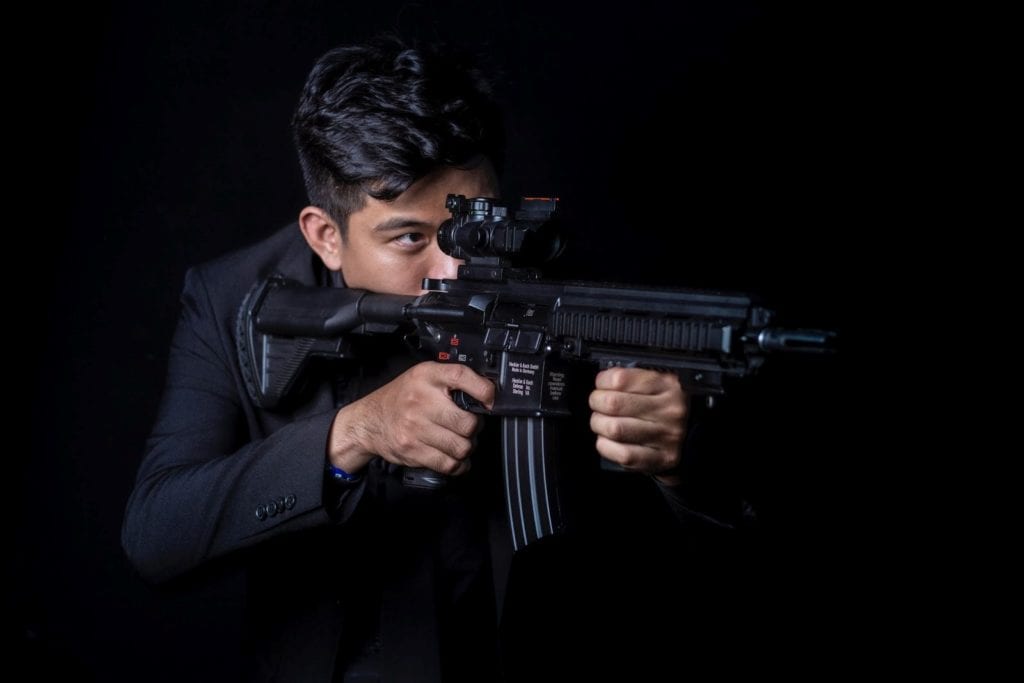 A rifle is simply a long-barreled gun that is usually fired from the shoulder. It has a long barrel that is grooved or rifled, giving bullets a spinning motion for a better precision at a far distance. It was initially known as a rifled gun.
A rifle is simply a long-barreled gun that is usually fired from the shoulder. It has a long barrel that is grooved or rifled, giving bullets a spinning motion for a better precision at a far distance. It was initially known as a rifled gun.
Whenever you are anywhere, you handle a firearm, or at a shooting range, safety must be strictly adhered to. Therefore, to make the most out of your rifle, the following measures/steps should be followed.
- The muzzle is pointing in a safe direction.
This rule is the most important in the safe handling of a gun. It is straightforward but also necessary. When the gun is pointing in a safe direction, no accidental discharge will put anyone in harm’s way. Note that the safe direction includes humans, animals, and inanimate objects that must be considered.
- Unload the Firearms when not in actual usage.
Always make sure that you unload the firearm whenever it’s not in usage. Whenever you hand over a firearm to someone or handle a firearm, make sure you check the chamber, receiver, and magazine to be sure that it contains no ammunition. Do not assume that a gun is not loaded; find out yourself. Also, do not climb a tree or a cross fence with a fully loaded gun.
- Be sure of your target and whatever is beyond it.
It is advisable that you do not fire a gun until you’re sure of your target and what is beyond their target. Once you fire a gun, it cannot be called back since the controls are out of your hands; therefore, you must ensure that you have great optics so your bullet does not injure someone or anything beyond your main target. Always take your time to get your target perfect.
- Use the right ammunition.
Using the wrong ammunition for your firearm can destroy or damage your firearm. It can also lead to terrible personal injuries or death. It only takes a single cartridge of the wrong caliber to destroy your gun and a second to cross-examine each one as they are being loaded.
- Be cautious if your gun doesn’t fire when you pull the trigger.
Periodically, a cartridge may not fire when the trigger you pull the trigger. When this occurs, try to remember if you had a round in the chamber. Once you’re certain that there is none there, solve the problem. And if otherwise, hold the gun facing the target. Then try to fire it once more and again; if it doesn’t still fire, you should wait for about 15-20 seconds. And if it still does not fire, then you should carefully unload the magazine and dispose of the cartridge safely.
Note that whenever a cartridge is in the chamber, the gun is loaded and okay to fire even though there has been a previous attempt by you to shoot, and it failed. It could go off at any point; therefore, you must exercise extreme caution and apply rule number one.
- Wear eye and ear protection when shooting.
While shooting, Shooters should wear personal protective glasses for their eyes and any form of hearing protectors. It is proven that exposure to shooting pollution in the form of noise can cause hearing damage, and eye protection should be used in case of ammunition defects, flying brass, and heating of firearms from firing. At times, an unburned powder fly’s through to the air or even comes back to the bullet fired, therefore coming close to you.
- Ensure that the barrel of the firearm is clear of obstruction before firing.
Ensure to open the action and make sure that there is no ammunition in the magazine or chamber before you load the firearm.
Ensure that the firearm is free of any form of obstruction, even as small as snow, too much lubricating grease or oil in the bore and mud, this can cause an unsafe increase in pressures, which cause the barrel to burst on firing or bulge, thereby causing serious injuries to the shooter and anyone closely.
It should be part of you to get the bore cleaned and remove any possible obstructions with a cleaning rod just before you shoot.
- Do not modify your rifle.
Never do any modification of your rifle by yourself. Improper changes or altering to your firearm can permanently destroy the firearm and thereby causes a kickback when it’s fired.
- Never shoot hard or flat surfaces.
Some objects may seem tempting to shoot at. Many hard or metallic surfaces or objects can be very dangerous to shoot, including water which may backfire in an unexpected direction. This can even lead to a bounce back to the shooter.
- Do not handle the gun when taking medication or consume alcohol.
Alcohol consumption tends to visually impair you and lead you to wrong the judgment of persons and objects around you if you decide to fire a rifle.
Owning a rifle is a huge responsibility and you must ensure to be safe while using it and ensure you don’t hurt anyone else.


